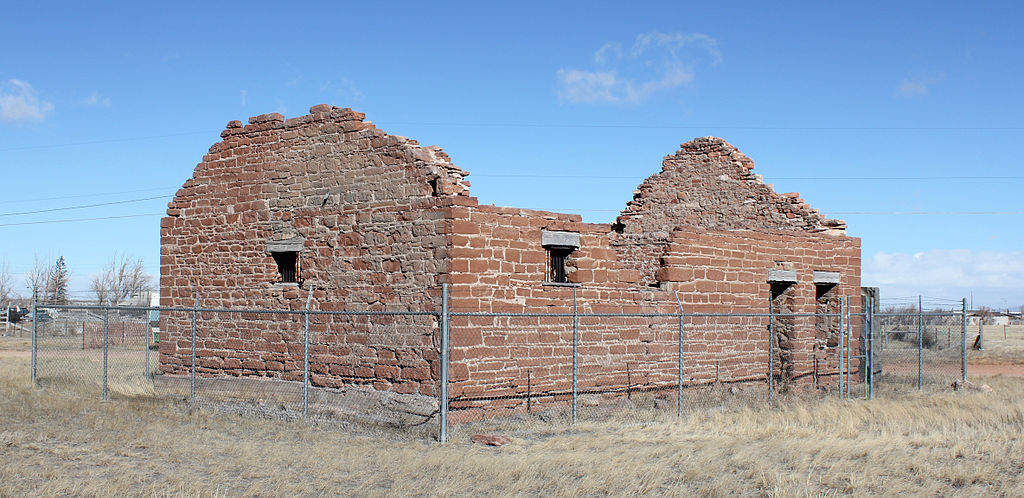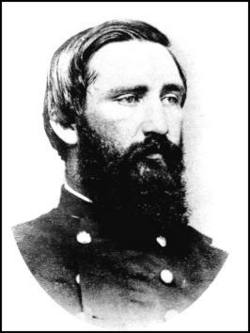Fort Sanders in Wyoming is a remarkable historical site pivotal to the region’s development during the late 19th century. Established in 1866, this military post protected workers on the Overland Trail and the Union Pacific Railroad.
Named after Colonel William P. Sanders, it became a central player in the Indian Wars, aiding in conflicts with the Arapaho and Cheyenne tribes.
Today, visitors can explore its rich history, from the original wooden structures to the later sandstone buildings, and learn about its significant contributions to the safety and growth of Laramie and the American frontier.
Historic Overview of Fort Sanders (Wyoming)

Fort Sanders was a military post located just outside of Laramie, Wyoming. Established in 1866, it initially protected workers and travelers on the Overland Trail.
Named after Colonel William P. Sanders, the fort played a notable role in regional conflicts, such as the Indian Wars, and in the development of the surrounding town of Laramie.
Historical Significance
- Served as protection for the Union Pacific Railroad workers
- Participated in the Indian Wars against the Arapaho and Cheyenne tribes
- Assisted in the establishment of law and order in the nearby Laramie settlement
Infrastructure
- Originally comprised of wooden structures, which were later replaced by sandstone buildings.
- Featured a commanding officer’s quarters, barracks, guardhouse, and hospital
Decommissioning
- The fort was decommissioned in 1882 as threats in the region diminished
- Remnants of the original fort have mostly disappeared, but the site retains historical importance
Location
- The site is adjacent to the Wyoming Territorial Prison, which has been preserved as a museum.
- Accessible to visitors interested in Western military history and 19th-century American frontier life
Current Status
- The site is marked by a commemorative plaque honoring its historical value
- Operates as a point of interest for educational and historical exploration
Historical Significance of Fort Sanders
Fort Sanders, an important military outpost in Wyoming, played a significant role in the region’s early development and in the Indian Wars.
Establishment and Early History

Constructed in 1866, Fort Sanders was established by the United States Army to protect the new transcontinental railroad, specifically the Union Pacific.
Named after Civil War General William P. Sanders, the fort’s primary purpose was to ensure travelers’ safety and the railroad’s uninterrupted progress through the territory of Wyoming.
The fort’s initial structures were mainly wood and adobe, reflecting the typical frontier military architecture.
Role in the Indian Wars
From its inception, Fort Sanders was intimately involved in the Indian Wars. During this period, the United States was engaged in protracted conflicts with various Native American tribes who were resisting encroachment on their lands.
- Protection of Settlers and Railroad Workers:
- Key Objective: Ensuring safe passage through the region
- Actions: Patrols and escorts provided by the troops stationed at the fort
- Engagements with Native American Tribes:
- Battles: Skirmishes and confrontations occurred between the Army and tribal warriors
- Tribes Involved: Primarily the Sioux, Cheyenne, and Arapaho
- Strategic Importance:
- Location: Positioned along the Lodgepole Creek, near the Overland Trail, a critical logistical point
- Military Operations: Launched and coordinated from the base against resistant Native American groups
The outpost functioned as a hub of military operations, and its strategic importance stemmed from the fort’s ability to project power and provide logistical support across the region.
Despite its closure in 1882, Fort Sanders’s historical significance remains. It highlights the complex interactions between the United States military, indigenous peoples, and the expansion of Western settlements in the 19th century.
Explore More: 15 Historic Forts in Wyoming
Fort Sanders Military Operations
Fort Sanders was an important location during its active years, with its commanders and various engagements shaping its historical significance.
Notable Commanders
Colonel John Stevenson:
- Led the construction of Fort Sanders.
- Served as the fort’s first commander after its establishment in 1866.
Major Thomas Tipton Thornburgh:
- He commanded at Fort Sanders before his untimely death at the Battle of Milk Creek in 1879.
Key Battles and Engagements
Battle of Platte Bridge (July 26, 1865):
- Occurred before the establishment of Fort Sanders.
- Involved troops that would later garrison the fort.
- Fierce engagement between U.S. military forces and Plains Indian tribes.
The Cheyenne Exodus (1878):
- Fort Sanders played a logistical role during the Northern Cheyenne Exodus.
- Troops from the fort participated in efforts to return the Cheyenne to their reservation.
Architecture and Structure
Fort Sanders, constructed in 1866, bears the hallmarks of a traditional military garrison of its era. The fort’s perimeter encompassed a rectangular design, embodying the strategic and functional considerations of the time.
Structurally, it comprised basic wooden buildings, including soldiers’ barracks, officers’ quarters, and support facilities.
The primary layout was arranged around a central parade ground, an open space for military drills and assembly. Key buildings were strategically placed for efficient workflow and easy access during daily operations and emergencies.
The officer’s quarters notably featured simple yet robust frames, hinting at their higher status within the fort. Though austere, these structures were slightly more refined than the enlisted men’s barracks.
The barracks were practical, spartan, and designed to house many troops.
While not as elaborate as other contemporary forts, Fort Sanders’ defensive architecture was sufficient for its intended purpose.
The fort did not possess extensive fortifications; instead, it relied on its strategic location and building arrangement to fortify against potential threats.
Support structures included a commissary, a hospital, and stables, which were essential for the fort’s function and sustainability.
Each building was constructed to maximize endurance through harsh weather conditions and provide fundamental shelter to its inhabitants.
This snapshot of the fort’s architecture and structure showcases the military pragmatism of the late 19th century in the American frontier.
Fort Sanders represents the period’s military construction practices, reflecting the needs and resources of its time.
Fort Sanders Preservation
Preserving historic sites like Fort Sanders is key to maintaining a tangible connection with the past. This section discusses the fort’s current condition and the conservation efforts undertaken to preserve it.
Current State
Fort Sanders, built in 1866, is now in a delicate state of preservation.
The site is partially accessible to the public, and characteristics that once defined the fort, such as building foundations and military artifacts, are subject to environmental and human impact. Weathering and erosion pose threats to the remaining structures.
Conservation Efforts
Efforts to conserve Fort Sanders are led by local government and historical societies. These groups have implemented measures such as:
- Erecting Protective Barriers: To shield against natural and human-induced damage.
- Site Monitoring: Regular inspections to assess and address new threats.
- Public Awareness Campaigns: Education initiatives to inform on the importance of preservation.
Stabilization Projects: Aim to fortify the surviving architectural elements and extend the fort’s lifespan.
Cultural Impact
Fort Sanders, a historic site in Wyoming, has influenced the cultural landscape and creative works related to the American frontier.
In Literature and Media
Fort Sanders has been depicted in various forms of literature and media, underscoring its historical significance. Historical accounts and fiction highlight the fort’s role in the Indian Wars and Transcontinental Railroad.
For instance, Robert M. Utley’s novel Frontier Regulars: The United States Army and the Indian, 1866-1891, includes a detailed description of the fort.
Local Folklore and Legends
Local stories and myths about Fort Sanders have become integral to the community’s cultural heritage. A known legend involves a soldier from the fort who is said to haunt the site, often called the “Phantom Sergeant.”
These tales are often shared during community gatherings and passed down through generations, cementing the fort’s place in local folklore.

Cory is a website owner and content creator who enjoys fishing, history, coin collecting, and sports, among other hobbies. He is a husband and father of four.
Romans 15:4 For whatever was written in former days was written for our instruction, that through endurance and through the encouragement of the Scriptures we might have hope.


Where was the original cemetery for Fort Sanders located?
The original cemetery was located near Fort Sanders on the Laramie Plains. I’m not sure of the exact spot.